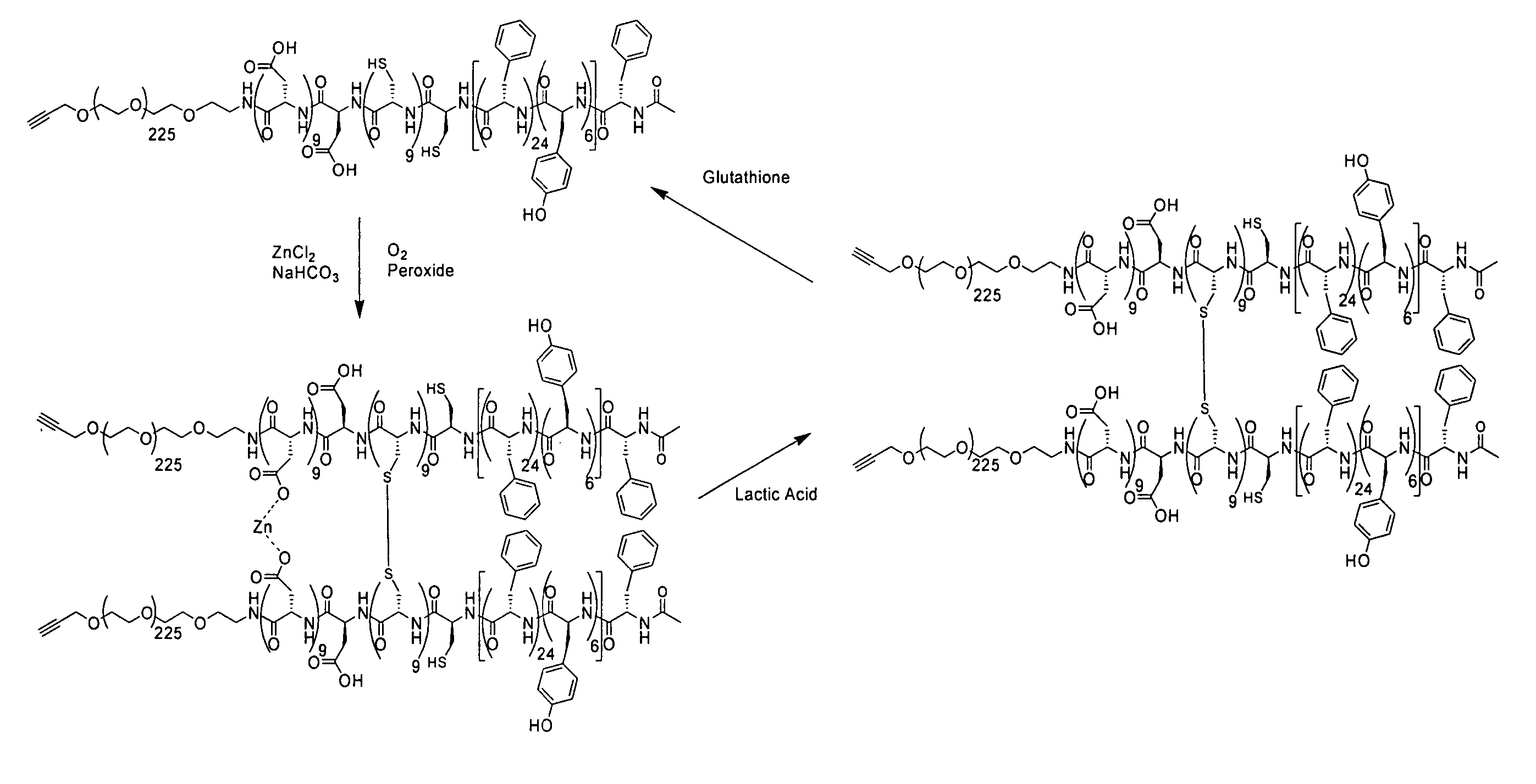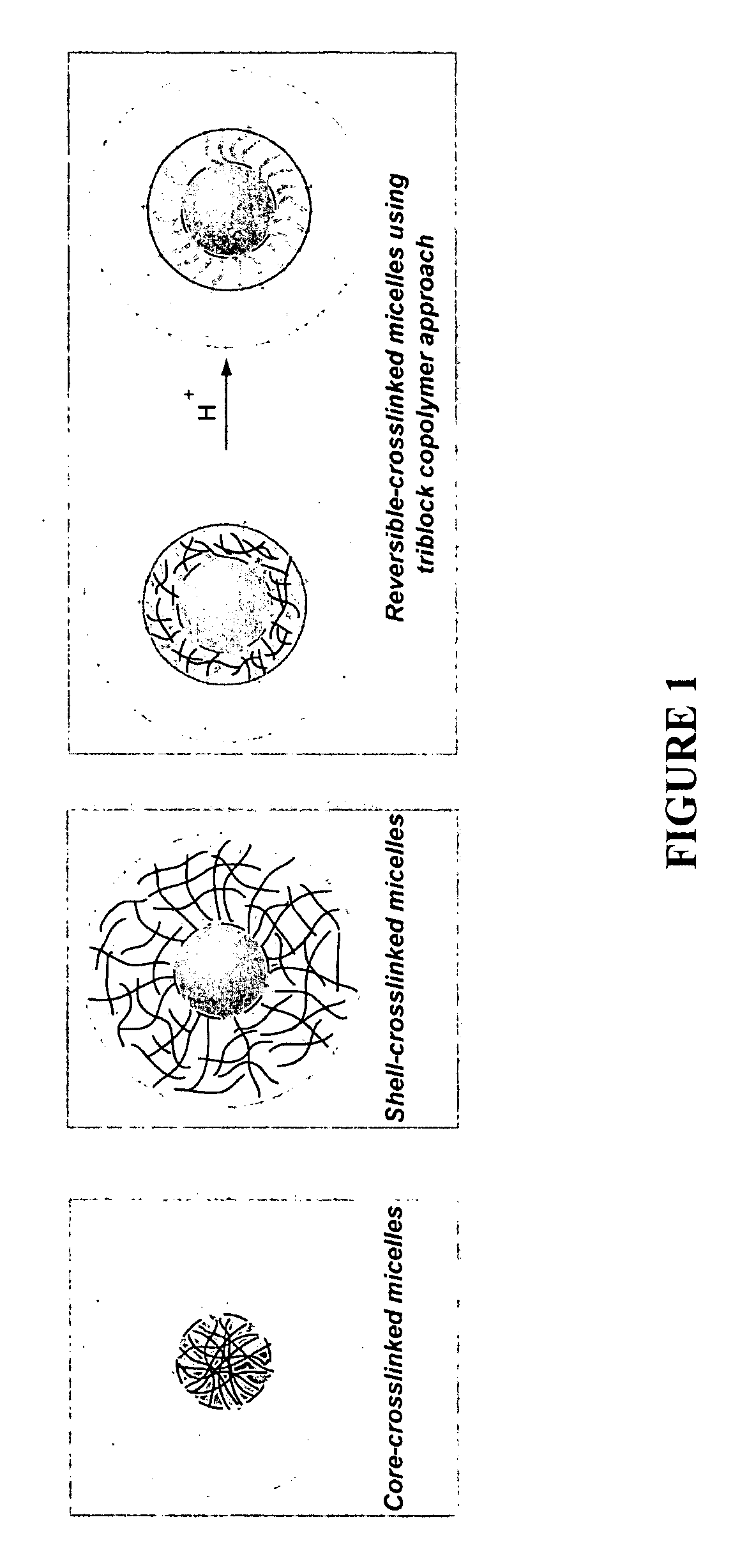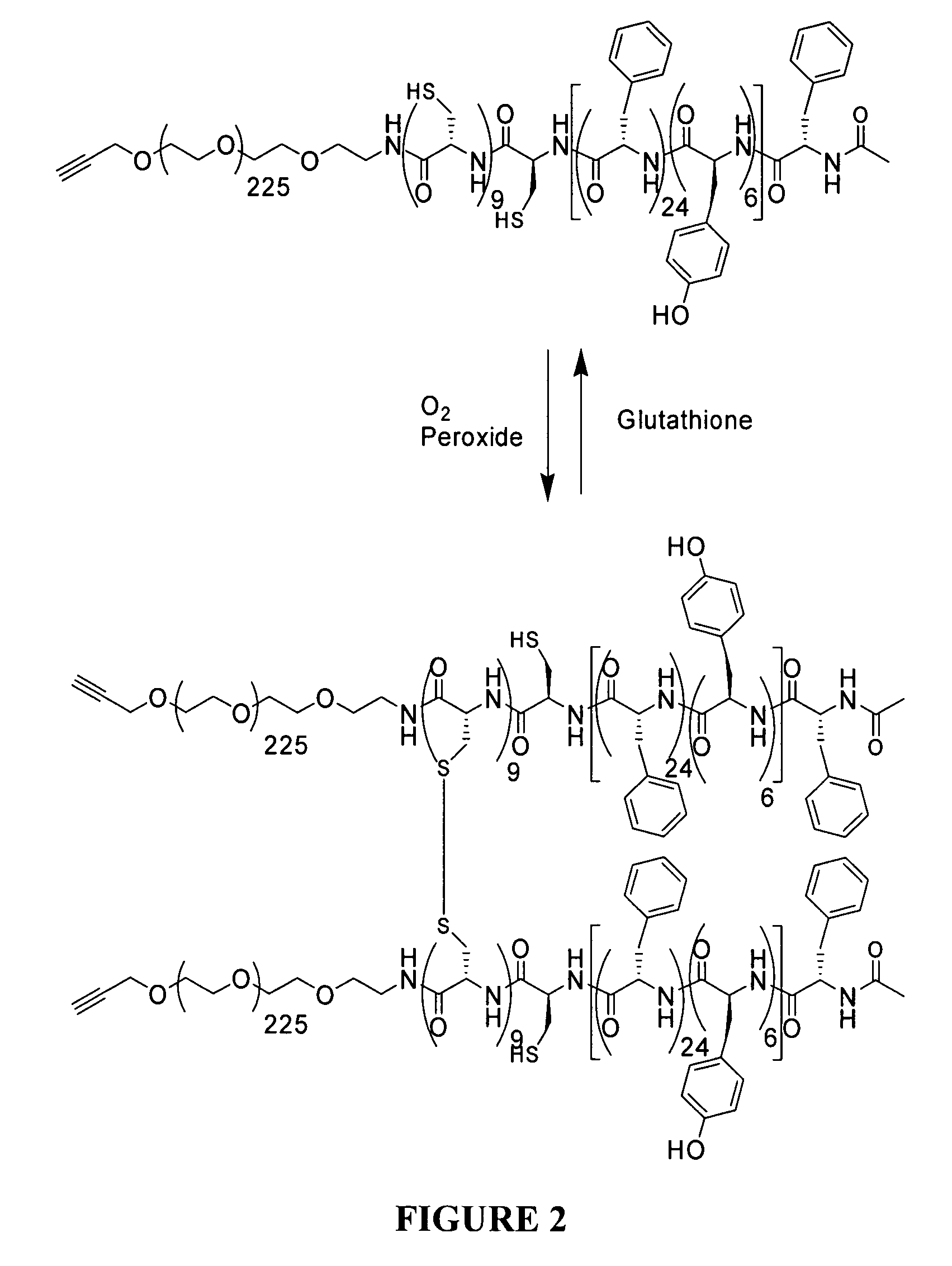Polymeric micelles for drug delivery
a micelle and polymer technology, applied in the field of polymer chemistry, can solve the problems of premature dissociation of drug-loaded micelles before active or passive targeting is effectively achieved, and achieve the effect of effective active or passive targeting
- Summary
- Abstract
- Description
- Claims
- Application Information
AI Technical Summary
Problems solved by technology
Method used
Image
Examples
example 1
[0493]
[0494]Dibenzylamino-poly(ethylene glycol)-t-butyldiphenylsilylpropene: To a stirred solution of dibenzylaminoethanol (482 mg, 2 mmol) in anhydrous THF (200 mL) was added a solution of potassium naphthalenide in THF (0.2 M, 10 mL, 2 mmol). The resulting solution was cooled to 0° C., then ethylene oxide (20 g, 454 mmol) was introduced to the alkoxide solution using Schlenk techniques. Upon complete addition of the ethylene oxide, the flask was backfilled with Argon, sealed and stirred at 40° C. After 24 h, t-butyldiphenylsilylpropargyl bromide (3.54 g, 10 mmol) was added to the reaction using Schlenk techniques. The solution was stirred for and additional 12 h at 40° C., allowed to cool, and the solvent removed. The resulting viscous liquid was purified by solid phase extraction (The liquid was loaded onto 400 mL silica gel which was rinsed with 3% MeOH in CHCl3 (1 L) followed by 10% MeOH in CHCl3 (1 L) which contained the polymer product) then precipitation into cold diethyl et...
example 2
[0503]
[0504]Dibenzylamino-polyethylene glycol-alcohol: To a stirred solution of dibenzylaminoethanol (242 mg, 1 mmol) in anhydrous THF (100 mL) was added a solution of potassium naphthalenide in THF (0.2 M, 1 mL, 1 mmol). The resulting solution was stirred for 5 minutes then cooled to 0° C. Ethylene oxide (10 g, 227 mmol) was introduced to the alkoxide solution using Schlenk techniques. Upon complete additon of the ethylene oxide, the flask was backfilled with Argon, sealed and stirred at 40° C. for 24 h. The reaction was quenched with water (1 mL) followed by the removal of solvent under reduced pressure. The resulting viscous liquid was purified by solid phase extraction (The liquid was loaded onto 200 mL silica gel which was rinsed with 3% MeOH in CHCl3 (1 L) followed by 10% MeOH in CHCl3 (1 L) which contained the polymer product) then precipitation into cold diethyl ether to give a white powder (6.8 g, 68% yield). 1H NMR (400 MHz, DMSO-d6, δ) 7.4-7.2 (m, Ar—H), 4.63 (t, CH2OH), ...
example 3
[0515]CMC Calculations: The CMC of micelles prepared from multiblock copolymers were determined using the method described by Eisnberg. (Astafieva, I.; Zhong, X. F.; Eisenberg, A. “Critical Micellization Phenomena in Block Copolymer Polyelectrolyte Solutions”Macromolecules 1993, 26, 7339-7352.) To perform these experiments, a constant concentration of pyrene (5×10−7 M) was equilibrated with varying concentrations of block copolymer (5×10−4 M to 1×10−8 M) in water at 50° C. for 2 hours, then stirred overnight. Examination of each sample's fluorescence excitation spectra (excited at 390 nm) revealed whether the pyrene was encapsulated in the diblock copolymer micelle (λmax=338 nm) or free in aqueous solution (λmax=333 nm). Plotting the ratio of the intensities between 338 nm and 333 nm (I338 / I333) vs. log of the block copolymer concentration allows for the graphical interpretation of the CMC value. In these experiments, I338 / I333 values of 1.3-1.5 represent pyrene encapsulated in bloc...
PUM
| Property | Measurement | Unit |
|---|---|---|
| diameter | aaaaa | aaaaa |
| diameter | aaaaa | aaaaa |
| diameter | aaaaa | aaaaa |
Abstract
Description
Claims
Application Information
 Login to View More
Login to View More - R&D
- Intellectual Property
- Life Sciences
- Materials
- Tech Scout
- Unparalleled Data Quality
- Higher Quality Content
- 60% Fewer Hallucinations
Browse by: Latest US Patents, China's latest patents, Technical Efficacy Thesaurus, Application Domain, Technology Topic, Popular Technical Reports.
© 2025 PatSnap. All rights reserved.Legal|Privacy policy|Modern Slavery Act Transparency Statement|Sitemap|About US| Contact US: help@patsnap.com



